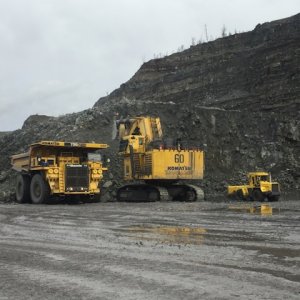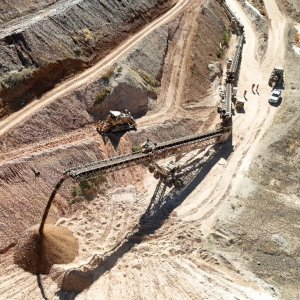
Water in Mining: a Shared Responsibility and Approach
In the past, water was perceived as a mere input for production but scarcity has turned it into a strategic asset for industrial operations. This is even more pronounced in mining as the resource is used in most stages of mineral processing. According to Deloitte, by 2030 about 25 percent of mining production will be prone to water shortages and other climate-related risks.
The Columbia Center on Sustainable Investment has found that mining gold and copper requires the highest amount of water, followed by nickel, coal and iron ore. Ore reserve trends could mean even higher use of the resource. “As ore reserves decline, mining companies have to expand operations into increasingly remote and arid regions, which requires new ways of managing water,” says the organization. Industry leaders agree. “Any operator’s interest is to preserve water resources because they cannot produce ore without it,” says Enrique Ortega, Director General of GRUPO SHB with RNG PERFORACION.
Water scarcity is also starting to create competition over resources between communities and the private sector, which in turn causes tension and conflict. “As concerns around water availability grow, communities and environmental groups are turning the spotlight to water-intensive industries, including mining,” says Deloitte’s Tracking the Trends 2018 report. Water access and management is even considered by the International Finance Corporation (IFC) as one of the biggest challenges of the 21st century in its report Water in the Mining Sector. In response, operators are seeking solutions and best practices to better manage their consumption as a water-intensive industry and collaboration is turning out to be an essential part of their journey.
In Mexico, water woes represent a particular hurdle for miners. According to SEMARNAT, just four of the country’s 13 hydrological regions hold 67 percent of renewable water resources but represent a mere 23 percent of the national population. On the other hand, the northern region of Mexico, where most mining activity takes place, experiences high degrees of stress on water resources. After the Valley of Mexico, which includes Mexico City, the highest strain is felt in the Northwest hydrological region, with a stress level of 81.4 percent, followed by the Baja California Peninsula with 79.8 percent. The Rio Bravo, which spans most of Chihuahua, comes fourth with 77.1 percent.
As a water-dependent industry, mining faces the challenge of improving its systems for water management. When addressing this issue, strategic planning is the first step. “Companies need to make sure that they have a clearly-defined plan of action for social and environmental risk mitigation to avoid undesired surprises,” says Edna Rodríguez, CSO and Partner at Intelligent Social Investment. “The most important step is identifying all the ways a project will impact the environment and the people who are close to the mine, which implies everything from noise pollution to the use of scarce resources such as water.”
Federico Casares, Business Development and Institutional Affairs Director Mexico at Veolia, believes a shared responsibility approach is based on a circular economy. “The circular economy demands companies have an extended responsibility approach to products,” he says. “I think this is the global development model to pursue, as it not only shifts from a linear economy that extracts, uses and disposes of resources, but it promotes reuse and recycling.”
Collaboration in the form of community engagement can also be complemented by outside-the-box thinking to create innovative new technology, according to Deloitte. “To reduce freshwater needs, mining companies are already investing in process innovation,” the report states. “They are collaborating with commercial technology providers to devise solutions for tailings storage and management, dust suppression techniques and seawater desalination plants. They are also increasingly collaborating with governments and other industry players to devise a shared water-use approach.”
Larry De La Torre, Vice President of International Sales at C&C Tsurumi Pump Mexico, says that more advanced solutions can cut company costs. “Companies spend billions of dollars in water management and there are additional processes that are starting to be a requirement for operations,” he says. “We are constantly trying to find ways to reuse water, not only from our dewatering systems but also at sewage and wastewater plants.” He mentions Industrias Peñoles as a Mexican national champion leading the way for water recycling processes in mine operations.
















